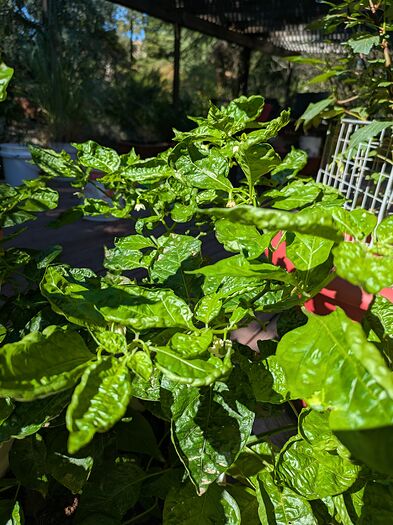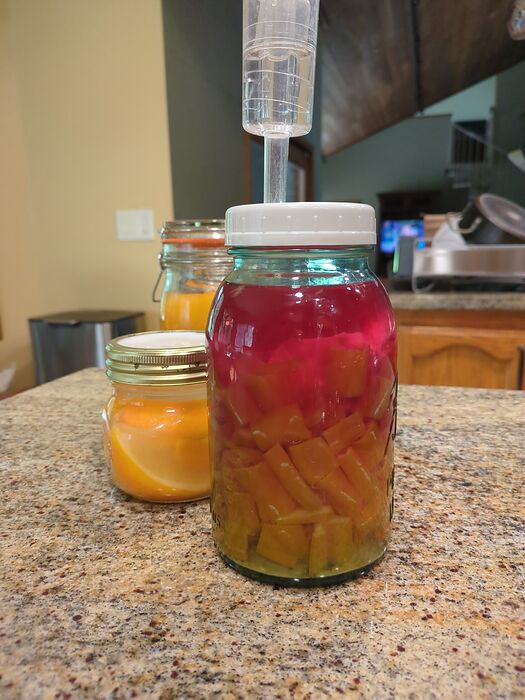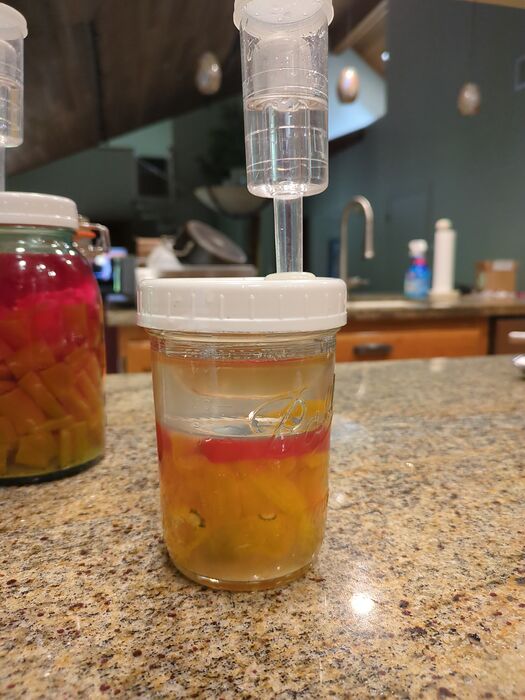With a ferment, the only way to know how much Essig Essenz to add (or 5% vinegar) is to do a pH check, using a meter which can be calibrated. While pH papers can work, the color of peppers can make it hard to ascertain pH by comparing colors.
Making sure your ferment did what you think it did is wise. Your pH after a ferment should be in the range of pH 4. If it’s in the pH5+ range, pitch it; something went wrong or it’s not done fermenting (too cold, not enough time, insufficient starter culture/bacteria).
Once you’ve confirmed the ferment is in the safe zone, around 4, I add Essig Essenz (EE) to drop the pH to pH 3.3 (2.28–3.34, given most meter’s margin of error) . I’ve not had a sauce go bad at this pH. While you can achieve this with 5% vinegar, it’ll take a lot more.
So, I’m not using a formula. Since a pH meter is required to determine the ferment’s final pH, it’s easy to add a bit of EE and watch the readings change using the same meter. Any formula would require obtaining a starting pH.
One should calibrate a pH meter before getting readouts. Generally, a couple buffer solutions, pH7 & pH4 are used, rinsing the probe/electrodes-containing bulb with distilled water in between liquids. Your meter should come with a guide covering this. Meters which cannot be calibrated are generally inaccurate.
Spoilage organisms at very low pH, e.g. pH 4, are usually fungi, molds. Especially if there are available sugars, one needs to increase the acidity below the tolerances of these fungi. The salt content is also a preservative, but affects bacteria more than fungi. With a sweet hot sauce, dropping the pH to 2.8–3.0 is likely a stable range. Straight 5% vinegar (distilled) runs around pH 2.28, and nothing grows in that, (except if vinegar producing bacteria were introduced with ethanol).




